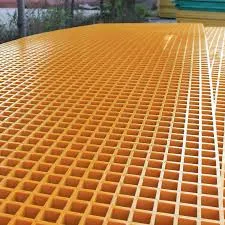
-
 Afrikaans
Afrikaans -
 Albanian
Albanian -
 Amharic
Amharic -
 Arabic
Arabic -
 Armenian
Armenian -
 Azerbaijani
Azerbaijani -
 Basque
Basque -
 Belarusian
Belarusian -
 Bengali
Bengali -
 Bosnian
Bosnian -
 Bulgarian
Bulgarian -
 Catalan
Catalan -
 Cebuano
Cebuano -
 China
China -
 China (Taiwan)
China (Taiwan) -
 Corsican
Corsican -
 Croatian
Croatian -
 Czech
Czech -
 Danish
Danish -
 Dutch
Dutch -
 English
English -
 Esperanto
Esperanto -
 Estonian
Estonian -
 Finnish
Finnish -
 French
French -
 Frisian
Frisian -
 Galician
Galician -
 Georgian
Georgian -
 German
German -
 Greek
Greek -
 Gujarati
Gujarati -
 Haitian Creole
Haitian Creole -
 hausa
hausa -
 hawaiian
hawaiian -
 Hebrew
Hebrew -
 Hindi
Hindi -
 Miao
Miao -
 Hungarian
Hungarian -
 Icelandic
Icelandic -
 igbo
igbo -
 Indonesian
Indonesian -
 irish
irish -
 Italian
Italian -
 Japanese
Japanese -
 Javanese
Javanese -
 Kannada
Kannada -
 kazakh
kazakh -
 Khmer
Khmer -
 Rwandese
Rwandese -
 Korean
Korean -
 Kurdish
Kurdish -
 Kyrgyz
Kyrgyz -
 Lao
Lao -
 Latin
Latin -
 Latvian
Latvian -
 Lithuanian
Lithuanian -
 Luxembourgish
Luxembourgish -
 Macedonian
Macedonian -
 Malgashi
Malgashi -
 Malay
Malay -
 Malayalam
Malayalam -
 Maltese
Maltese -
 Maori
Maori -
 Marathi
Marathi -
 Mongolian
Mongolian -
 Myanmar
Myanmar -
 Nepali
Nepali -
 Norwegian
Norwegian -
 Norwegian
Norwegian -
 Occitan
Occitan -
 Pashto
Pashto -
 Persian
Persian -
 Polish
Polish -
 Portuguese
Portuguese -
 Punjabi
Punjabi -
 Romanian
Romanian -
 Russian
Russian -
 Samoan
Samoan -
 Scottish Gaelic
Scottish Gaelic -
 Serbian
Serbian -
 Sesotho
Sesotho -
 Shona
Shona -
 Sindhi
Sindhi -
 Sinhala
Sinhala -
 Slovak
Slovak -
 Slovenian
Slovenian -
 Somali
Somali -
 Spanish
Spanish -
 Sundanese
Sundanese -
 Swahili
Swahili -
 Swedish
Swedish -
 Tagalog
Tagalog -
 Tajik
Tajik -
 Tamil
Tamil -
 Tatar
Tatar -
 Telugu
Telugu -
 Thai
Thai -
 Turkish
Turkish -
 Turkmen
Turkmen -
 Ukrainian
Ukrainian -
 Urdu
Urdu -
 Uighur
Uighur -
 Uzbek
Uzbek -
 Vietnamese
Vietnamese -
 Welsh
Welsh -
 Bantu
Bantu -
 Yiddish
Yiddish -
 Yoruba
Yoruba -
 Zulu
Zulu
High-Quality Fiberglass Reinforced Plastic Tanks | Durable & Reliable Solutions
Fiberglass Reinforced Plastic Tanks An Overview
Fiberglass reinforced plastic (FRP) tanks are an innovative solution widely used in various industries for storage and containment purposes. Combining the lightweight properties of fiberglass with the durability of plastic, these tanks offer a unique blend of strength, corrosion resistance, and versatility.
Composition and Properties
FRP tanks are composed of a polymer matrix reinforced with fiberglass. This combination results in a material that is exceptionally strong, yet lightweight compared to traditional materials like steel or concrete. The fiberglass reinforcement adds structural integrity, allowing the tanks to withstand high pressures and temperatures. Additionally, FRP tanks are resistant to a wide range of chemicals, making them ideal for storing corrosive substances like acids, alkalis, and solvents.
One of the standout features of fiberglass reinforced plastic is its longevity
. Unlike metal tanks that can corrode over time, FRP tanks maintain their structural integrity even in harsh environments. This durability translates to lower maintenance costs and a longer service life, making them a cost-effective solution for businesses.Applications
The versatility of FRP tanks makes them suitable for numerous applications across various industries. In the chemical industry, they are commonly used for storing hazardous materials. Their resistance to corrosion ensures safety and compliance with regulatory standards. In the water treatment sector, FRP tanks are utilized for both potable water storage and wastewater treatment due to their ability to withstand chemical exposure.
fiberglass reinforced plastic tank

In the agricultural industry, FRP tanks are employed for storing fertilizers and other agrochemicals. Their lightweight nature facilitates easy transportation and installation on farms. Moreover, they can be customized in terms of size, shape, and color to meet specific requirements, further enhancing their utility.
Environmental Benefits
In an era where environmental sustainability is paramount, FRP tanks present several ecological advantages. Their manufacture often involves lower energy consumption compared to traditional materials. Additionally, their durability reduces the need for frequent replacements, contributing to less waste. Furthermore, the resistance of FRP tanks to leakage minimizes the risk of environmental contamination, thereby supporting eco-friendly practices.
Installation and Maintenance
The installation of FRP tanks is relatively straightforward, which helps reduce overall project timelines. They can be installed above or below ground depending on the specific needs and regulations. Regular maintenance is generally minimal, primarily involving inspections to ensure structural integrity and check for any potential issues.
Conclusion
In conclusion, fiberglass reinforced plastic tanks represent an ideal solution for a myriad of storage needs across multiple sectors. With their unparalleled strength, chemical resistance, and environmental advantages, they are quickly becoming the preferred choice for businesses aiming to enhance safety and efficiency. As industries evolve and look for sustainable practices, FRP tanks are poised to play a crucial role in the future of storage technology. Their combination of functionality and durability makes them a smart investment for any organization looking to optimize their operations.
Latest news
-
Exploring the Benefits of Top Hammer Drifter Rods for Enhanced Drilling PerformanceNewsJun.10,2025
-
High-Precision Fiberglass Winding Machine for GRP/FRP Pipe Production – Reliable & Efficient SolutionsNewsJun.10,2025
-
FRP Pipes & Fittings for Shipbuilding - Corrosion-Resistant & LightweightNewsJun.09,2025
-
Premium FRP Flooring Solutions Durable & Slip-ResistantNewsJun.09,2025
-
Premium Fiberglass Rectangular Tanks Durable & Lightweight SolutionNewsJun.09,2025
-
Tapered Drill String Design Guide Durable Performance & UsesNewsJun.09,2025









